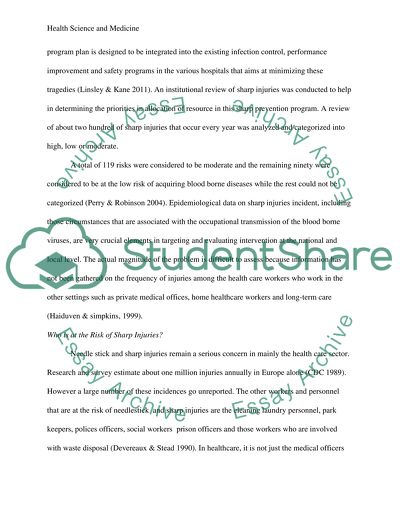Cite this document
(“Design a programme plan focusing on the introduction of safe sharps Essay”, n.d.)
Design a programme plan focusing on the introduction of safe sharps Essay. Retrieved from https://studentshare.org/health-sciences-medicine/1687749-design-a-programme-plan-focusing-on-the-introduction-of-safe-sharps-mechanisms
Design a programme plan focusing on the introduction of safe sharps Essay. Retrieved from https://studentshare.org/health-sciences-medicine/1687749-design-a-programme-plan-focusing-on-the-introduction-of-safe-sharps-mechanisms
(Design a Programme Plan Focusing on the Introduction of Safe Sharps Essay)
Design a Programme Plan Focusing on the Introduction of Safe Sharps Essay. https://studentshare.org/health-sciences-medicine/1687749-design-a-programme-plan-focusing-on-the-introduction-of-safe-sharps-mechanisms.
Design a Programme Plan Focusing on the Introduction of Safe Sharps Essay. https://studentshare.org/health-sciences-medicine/1687749-design-a-programme-plan-focusing-on-the-introduction-of-safe-sharps-mechanisms.
“Design a Programme Plan Focusing on the Introduction of Safe Sharps Essay”, n.d. https://studentshare.org/health-sciences-medicine/1687749-design-a-programme-plan-focusing-on-the-introduction-of-safe-sharps-mechanisms.


